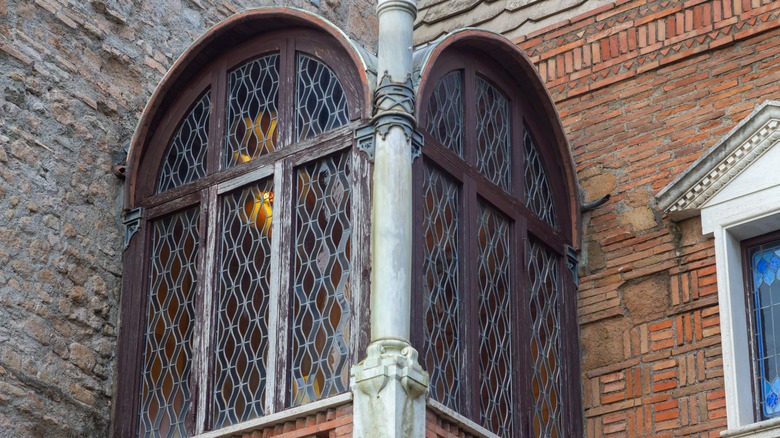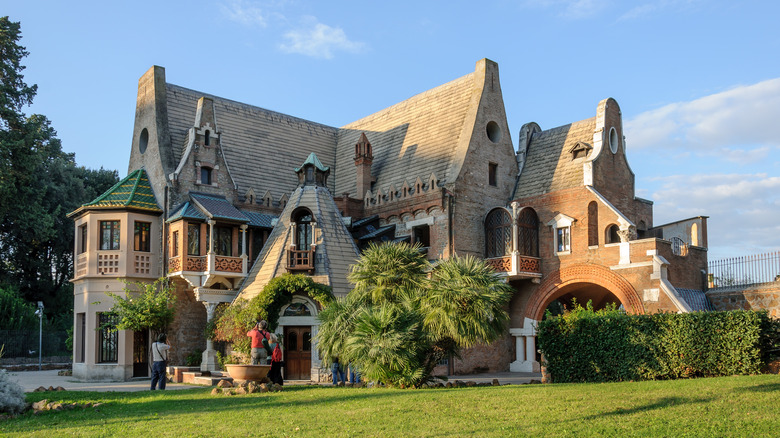Hidden In Northeast Rome Is An Eccentric Swiss Cabin With Unique Stained-Glass Windows
It's no secret that Rome is one of the most overtouristed places in Europe. However, the Eternal City has a long and fascinating history, which means there is so much to see and do, making Rome the best place to start your Italian vacation. The many ancient ruins and Renaissance architecture that can still be enjoyed today certainly are alluring, but a lot of unique and underrated places often get ignored by tourists. Even with nearly 7 million international visitors in 2023 (via Statista), there are still some places in Rome that are never crowded. While other people are elbowing their way to toss a coin into the Trevi Fountain or taking a tour with dozens of other visitors through the Colosseum, you can enjoy some one-of-a-kind architecture that you may not expect to find in the Italian capital at Casina delle Civette.
Casina delle Civette, or the Little House of the Owls, is a remarkable Swiss-inspired hut that was build in the 19th century that sits on the edge of the Villa Torlonia park in the Nomentano neighborhood of Rome. Nomentano is further from the Tiber and, therefore, less of a tourist draw than other areas in the city; it is far flung from the crowds at the Spanish Steps, the Roman Forum, and the Pantheon. From the Colosseum, it takes about 30 minutes via public transportation to get there.
Casina delle Civette's design is unlike any other building in Rome
Casina delle Civette is named for its owl decorations, which can be found throughout the home, including in the entryway and stained-glass windows. The house was built by Giuseppe Jappelli for Prince Alessandro Torlonia in 1840, who used the building as a little home-away-from-home away from his main palace. It borrows some design elements from typical Swiss cabin architecture, which makes it unique. However, the most impressive features are the stained glass and ornate decorations inspired by nature and animals throughout the home. Images of wild birds, colorful flowers, butterflies, and other natural elements that are found in many Art Nouveau works adorn the windows, walls, wrought iron fencing, textiles, upholstery, and tiles.
After Prince Alessando's grandson, Prince Giovanni Torlonia Jr., died in the late 1930s, the building fell into disrepair between World War II and the early 1990s. The home was restored, and its breathtaking stained glass is on display for all to see. Villa Torlonia Park is free to enter and walk around, but you must purchase tickets to visit the Casina delle Civette. You can also enjoy an audio guide as you're touring the house for a more rewarding experience.

